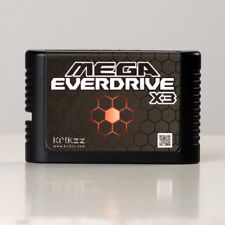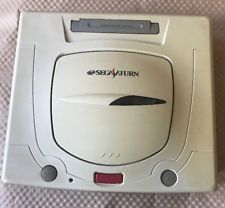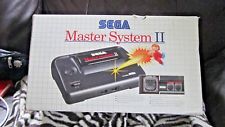|
June 9th, 2006, 21:10 Posted By: Darksaviour69
This article is from www.retrorevival.co.uk, issue 3 (01.02.2005), and posted here with premission
Launched in the UK on the 14th October 1999, the Sega Dreamcast was to become a legend in the very short time it graced our retail shelves, and even more so since its commercial demise, thanks to the ever popular homebrew scene that has since developed for it.
Innovation and originality was at the forefront of the Dreamcast profile and it was the most powerful home console the world had seen. It was a smaller home version of the Naomi arcade board (see boxout) and came with a 33.6k modem as standard (NTSC machines had 56K modems). Future keyboard and mouse capabilities and a great catalogue of original games was not enough to ultimately compete with the likes of the Playstation and Nintendo 64. Domination of the market by Sony, along with the imminent arrival of the next generation machines, coupled with doubt over the system (due to the failure of the 32x and the Saturn before it) eventually sealed the fate of arguably the best console ever.
After only having been on sale in the UK for 17 months, Sega announced in March 2001 that it was to stop production of the console in a bid to restructure themselves as a ‘software only’ company after some four years of financial losses. As soon as the announcement was made third party games developers began to drop off the DC bandwagon, and by the end of 2001 game production was all but over. Only hardcore publishers in Japan continued to release games after this (Ikaruga possibly being the best of the bunch), with the last game from Sega themselves being Puyo Puyo Fever in early 2004.
Even though the Dreamcast has been commercially dead for some three years or so, the emulation and homebrew scene goes from strength to strength, with some offerings being equivalent if not better than anything that has already been released.
In fact the only other console to come anywhere near as close to the Dreamcast in terms of homebrew development is
Microsoft’s XBOX. If you are looking at playing retro games on your TV, the Dreamcast is a great way to get initiated as you can pick one up for around £20 now, and the best thing about it is that you do not need to modify the machine, unlike the XBOX, to play any of the homebrew offerings.
SEGA AGAINST THE PIRATES
The DC homebrew scene was never
meant to happen as Sega had a host of
anti-piracy methods installed in the
console to protect their profits.
They had seen that cartridge based
console piracy was virtually non existent
due to the cost of buying a programmer
and blank cartridges. However it was
realised that Sega’s Next Gen machine
would need a cd based format (due to
the amount of data needed for each
game), and therefore the piracy situation
would probably change.
They decided that they needed to create
a cd system which would be hard, if not
impossible to copy, thus stopping the
appearance of pirate games as much as
they could.
They came up with their own proprietary
format (well Yamaha did and Sega
bought it from them – See boxout),
called the GDRom, which was in essence
a 1GB CDRom disc of the same physical
size.
Initially the GDRom was the perfect
method to stop the copying of games.
Blank GDRom discs were not available
(and never would be commercially), and
the blank space in between the low and
high density tracks was not by-passable
by normal CDROM drives. All was
looking good.
In April 2000 a coder by the name of
Skywalker, a member of the demo group
Hitmen, released the A.E.G -Demo.
It was shown at the Mekka & Symposium
2000, an annual demo scene meet for all
computers and consoles, held in
Fallingbostel. It was created with the
Dreamcast Debug Handler (a PC to DC
cable and software) and ran off of a
normal CDRom disc on a totally
unmodified console.
The Dreamcast world was stunned, and
so was Sega.
The A.E.G Demo gave hope to other
programmers, and they slowly started to
see what they could create, however the
Debug Handler was cumbersome to
create and use, so coders all over the
world started to look for alternatives.
Help was to arrive for them from an
unusual and unpredicted source.
Sega’s protection methods in the
Dreamcast’s hardware itself had been
breached by Skywalker and he had
proven to everyone that homebrew
software could run on an unmodified
machine. Sega, still concerned about
software piracy were comforted by the
fact that they still had the ace card up
their sleeves in the form of their GDRom
formatted discs.
For now the games themselves were safe
but it was not long before this situation
would change and ultimately pave the
way for gifted bedroom coders to show
off their talents…
MIL-CD AND BLEEM
Back in 1999 Sega launched the MIL-cd
format in Japan. It was created as an
enhanced format designed to improve on
the then current cd music media by fully
utilizing the space on the 1GB GDRom.
The idea was to allow the inclusion of
additional elements such as video clips,
image galleries and extra data not
normally found on the already
standardised CD-Extra format.
It was planned that new music cds would
include full screen video, internet
capabilities and enhanced navigational
interfaces, to take advantage of the DC’s
ability to play them. It would be this
new music cd format that would be the
thorn in the Dreamcast’s side as it would
allow the booting of code from a CDRom
bypassing the need for GDRom discs
altogether.
Fast forward to May 2000, and a small
company called Bleem Inc had wowed
onlookers at the annual E3 gaming show
with information on a new piece of
software for the DC called Bleemcast.
The demo they showed was touted as an
emulator that would not only enable you
to play PSX games on your Dreamcast,
but also enhance the experience, as it
would use portions of the consoles
hardware to dramatically improve those
games. What was remarkable was that it
was an unofficial product, but more
importantly it used the DC’s ability to
play the MIL-cd format, which was the
way Bleem Inc managed to bypass the
consoles protection mechanisms.
Initially promised as a pack of four
emulators, each able to run 100 games,
Bleemcast was eventually released in
2001 as a set of three discs each
emulating only one title each (Gran
Turismo 2, Tekken 3 and Metal Gear
Solid) before Bleem Inc went bankrupt.
The reason for them shutting up shop are
not crystal clear however it is rumoured
that Sony offered to pay off Bleem Inc’s
massive debts if they stopped production
of all Playstation emulators, which
obviously included Bleemcast.
It was a shame, as Bleemcast is an
exceptional piece of coding, and proved
that the Dreamcast had great potential
for homebrew coders to create truly
amazing programs. Even today the
enhancements that Bleemcast gives over
Gran Turismo 2 cannot be matched by
the backwards compatibility of the
Playstation 2 and its Emotion Engine,
which shows us just what the DC was,
and still is, capable of.
Not so long after the success of the
Bleemcast announcement at the 2000 E3
show, a guy called Marcus Comstedt
started to document the MIL-cd format.
It was known for some time that MIL-cd
would allow unauthorised code to be
booted from a CDRom disc, so he went
about disassembling of the Dreamcast
and found that it was possible to self
boot programs by placing an audio track
before the data track and then
scrambling the binary information. He
posted his findings on his website along
with sample code and tools that would let
other coders create their own bootable
Dreamcast CD's.
UTOPIA
In June 2000 the famous Utopia boot
disc was released, along with pirated
Dreamcast ISO images, by a warez
group named Utopia.
They took all the glory by claiming to be
the first group to release pirate games
for the Dreamcast, however it was the
hard work of Skywalker, Bleem Inc and
Marcus Comstedt which made it all
possible (albeit they were working
towards developing the homebrew scene
– piracy was simply a horrible side effect
of their combined work.)
The Utopia boot disc used the MIL-cd
structure to boot specific code into the
consoles RAM which would then execute
and allow the loading of unauthorised
programs and imported games
(bypassing the region coding) as well as
pirate games.
What made this more accessible to the
DC community was the fact that it could
be burned onto a normal CDRom disc
with a normal cd writer, and the fact that
you did not need the console modified
with a mod chip or other device to use it.
People all over the world were using
copied software in the knowledge that
their warranties were still intact.
It was not long before the boot disc was
discarded as warez groups found ways of
incorporating the boot code into the
released ISO, thus eliminating the need
for a boot disc at all.
SEGA BUY OFF KALISTO
Sega were losing money on the hardware
as it was, let alone the money they were
losing due to lack of software sales
through the ever increasing piracy scene.
They had to do something fast, and so
they started shutting down websites that
were advertising or offering the Utopia
boot disc and associated games ISO’s.
One of the biggest ISO release groups at
the time was Kalisto (not of Kallisto
Entertainment software house fame we
hasten to add.).
It is regarded in Dreamcast circles that
they were the first to contribute a
number of things to the scene including
PAL / NTSC conversions, self booting
pirate games (without the need for the
Utopia boot disc) and the removal of the
dummy file from games (which too was
included as a copy protection
mechanism).
It is reported that Sega contacted
members of the group and offered them
stock options in Sega themselves on the
promise that the group were to stop
releasing pirate games immediately.
This has never been confirmed, and in
some instances ridiculed, however it
would not be the first time this type of
thing has happened.
Unconfirmed reports suggest that a few
years previously Pompey Pirates of Atari
ST warez fame were also allegedly
offered bribes and products from top
game publishers, in exchange for the
group stopping the release of cracked
versions of new titles. However,
although they apparently accepted the
goodies on offer, it never stopped them
releasing the odd game or two down the
line.
The story goes that when Kalisto
eventually bowed out of the DC warez
scene to turn their attentions to
Playstation piracy, a new group called
Echelon instantly appeared who could do
everything that the famous Kalisto could
do and then some.
It is considered and generally accepted in
the piracy scene that Kalisto and Echelon
are one and the same, but whatever the
true story behind this really is,
unfortunately for Sega, the pirated game
releases kept coming and their debts
kept growing.
DC HOMEBREW TAKES OFF
In June 2000 Dan Potter decided to experiment with compiling code without the need for the official Sega development kit, and just one month later he released his work as LibDream, a freeware independent Dreamcast library, which would become the defacto software that many coders used to port over the first emulators, games and applications.
In the same month the WinCE Dev kit was “leaked” and a group of coders operating from Boob.co.uk used it to release an application called BoobPlay (an mpeg and AVI player).
August 2000 was a busy month with not only another movie player released in the form of GypPlay, but this was the month in which the first emulators were successfully ported over to the console. Gleem was a NES emulator written by Chuck Mason using LibDream, and shortly following that the SNES emulator Sintendo was released written with the WinCE development kit. Many other emulators and applications appeared, made with both the LibDream and WinCE development kits, and in December 2000 LibDream evolved into KallistiOS, which is still in use today. Sales of Dreamcast hardware took off virtually overnight as more and more applications, emulators and pirate games appeared. Sega were selling consoles by the bucket load, however they were also selling them at a heavy profit loss, and the lack of game sales meant that they were building up a large debt very fast. Sega rapidly changed the code in the Dreamcast in an attempt to stop unauthorised code from being booted, and as of October 2000, NTSC machines had additional code installed in the bios which would not allow booting of the MIL-cd format from CDRom.
This stopped unofficial games and programs running on the newer consoles once and for all, however it was too late by then. The damage through piracy had been done, and the console was condemned to the grave in early 2001 when Sega officially ceased production. The compromising of the MIL-cd format was amongst the reasons for the demise of the machine as it helped create the pirate scene in the first instance, however in a strange twist of fate if it was not for MIL-cd support being included in the consoles hardware, the homebrew scene may never had happened.
THE FUTURE
Admittedly, the current homebrew scene on the Dreamcast is not as strong as it was in late 2000, but that does not stop new software being written and the updating of games and emulators. With the likes of the ever increasing Beats Of Rage mods, the ability to play MP3’s, VCD’s and even Divx, as well as the new emulators being developed like the Neo Geo one the future of the homebrew scene is looking good, if not terrific.
In addition to this, projects such as the GOAT Store endeavours to take the best homebrew games and press ready for commercial distribution. GOAT is an online shop which caters for virtually all consoles both with software and hardware sales, and is to the best of our knowledge the only publishers outside of Japan that both press and distribute DC media. Inhabitants and Maqiupai, winners of the First Annual Dream On Contest (a contest for homebrew coders) had their creations made available for sale via the GOAT Store as prizes, so there is hope for those of you thinking about delving into the Dreamcast programming scene and want to make a few pounds from it too!
For those of you considering this, there are many websites out there now that include all the freeware tools you need to code and compile a project on the console. With some of the best programmers around there is always a helpful hand available from one of the many forums if you decide you want to try your hand at a little programming. Over the years there have been many homebrew projects produced including the DC Tonic compilation disc handed out at E3 2001 (see boxout) as well as countless other games, emulators and applications.
In the next few pages we take a look at just a few of these creations, as well as showing you where to get help when you are stuck, and listing some of the more well known Dreamcast websites for further reading.
It is not meant to be a definitive guide by any means, however what it will show
you is what is actually possible with the console in its stock form, with no additions whatsoever. These pages alone will prove that there is still life in the old dog yet!.
For more information and downloads, click here!
 There are 0 comments - Join In and Discuss Here There are 0 comments - Join In and Discuss Here
|
|
 Sega Everdrive Flashcart
Sega Everdrive Flashcart




